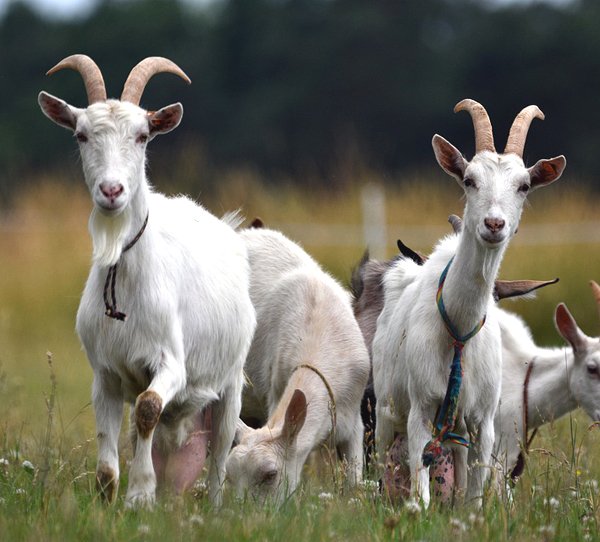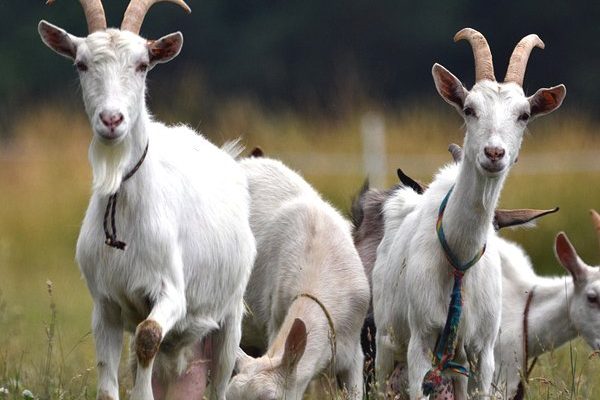
Just like a great cup of coffee that brings together different flavors, Saanen goats combine a rich history with impressive characteristics that make them a favorite among farmers and homesteaders alike. Imagine a goat that’s not just good for milk but also has a friendly nature—it’s like hitting the jackpot. Whether you’re thinking about adding goats to your farm or simply want to know more about these incredible animals, you’re in the right place.
History of the Saanen Goat
The Saanen goat hails from the picturesque Saanen Valley in Switzerland. Historically, this breed has roots that trace back to the 19th century. Farmers in this region began breeding them for their outstanding milk production capabilities. Here’s the thing: Saanen goats were recognized for their ability to thrive in various climates, which made them a valuable asset for farmers not just in Switzerland but around the world.
Another interesting tidbit is that Saanens are recognized for their high milk yield, which often surpasses that of other dairy goat breeds. In fact, the Swiss developed a breed that could produce a substantial amount of milk while being easy to manage. Their popularity skyrocketed, and soon, Saanen goats were exported to different countries, spreading their good-natured genetics far and wide.
Today, Saanen goats are bred in various regions, from North America to Australia. Their adaptability and strong genetics have made them a go-to choice for many dairy farmers. Knowing this, you might wonder how these goats ended up being so friendly and cooperative.
Physical Traits of the Saanen Goat
Saanen goats are known for their striking appearance. They usually have a white or cream-colored coat, which gives them a clean and bright look. Standing tall at about 30 inches for males and 28 inches for females, they have a sturdy build with strong legs. Their large, floppy ears and calm eyes add to their endearing aura.
One characteristic that sets Saanens apart is their impressive body structure. They have a rectangular body shape, which contributes to their ability to store nutrients and produce ample milk. If you ever see one in a pasture, you’ll notice how gracefully they move, almost as if they’re prancing. Their friendly demeanor makes them a pleasure to be around, whether you’re milking them or just enjoying their company.
Additionally, their milk has a high-fat content, which is another reason for their desirability in the dairy industry. The creamy texture and flavor make Saanen goat milk perfect for cheese and yogurt production. So, whether you’re aiming for delicious dairy products or looking to keep a pleasant companion, Saanens have you covered.
Temperament and Behavior
If you’re wondering what living with Saanen goats is like, let me explain: it’s often described as a joy. Saanens are known for their friendly and calm nature. They tend to be social creatures that enjoy the company of both humans and other animals. This characteristic makes them easy to handle, especially for beginners who may be intimidated by other goat breeds.
Their gentle temperament can be a significant advantage for families or small farms. You might find them following you around the yard like a loyal dog, looking for attention and treats. It’s not uncommon for Saanens to get along well with children, making them great companions for families looking to introduce kids to life on a farm.
However, like all animals, they need proper training and socialization. Regular handling from a young age will help them become well-adjusted adults. If you’re planning to raise Saanen goats, setting aside some time for bonding will pay off in their eagerness to interact with you.
Primary Uses of Saanen Goats
When it comes to primary uses, Saanen goats shine brightest in dairy production. Their milk is known for its high volume and excellent quality. On average, a Saanen goat can produce between 2 to 4 gallons of milk daily during peak lactation. This impressive yield is perfect for those looking to make cheese, yogurt, or simply enjoy fresh milk.
Aside from milk production, Saanens also make wonderful pets. If you’re new to goat ownership, their calm and friendly nature can make the experience enjoyable and fulfilling. Many people find that having goats around uplifts the atmosphere on their farm or homestead. Just imagine spending weekends in the sun, surrounded by these cheerful creatures.
Furthermore, Saanen goats are often included in educational programs. Many farms open their gates for school groups to learn about farming and animal care, and Saanens are usually the stars of the show. Their friendly demeanor makes them ideal for demonstration purposes, showcasing how rewarding goat farming can be.
Care and Maintenance of Saanen Goats
Caring for Saanen goats requires a bit of commitment, but it’s nothing too daunting. First off, they need a proper shelter to protect them from extreme weather. A clean, dry barn with good ventilation is essential for their health. Make sure it has enough space for them to move around comfortably, especially if you plan to have more than one goat.
Nutrition is another critical aspect. Saanens thrive on a balanced diet consisting of hay, grains, and fresh pasture. Supplementing their diet with minerals and vitamins will help maintain their overall health and ensure they produce quality milk. If you’re ever unsure about their diet, consulting a veterinarian can provide guidance tailored to your specific goats.
Regular health checks and vaccinations are also necessary. Just like humans visit doctors for check-ups, goats need their wellness checks too. Keeping up with their veterinary care can help prevent any health issues before they become significant problems.
Saanen Goats in Modern Farming
Today, Saanen goats continue to play a vital role in both small and large-scale farming operations. Many farmers appreciate their efficiency in milk production combined with their gentle temperament. This breed represents a harmonious balance between productivity and ease of care, something all farmers appreciate.
Moreover, sustainable farming practices are becoming increasingly popular, and Saanens fit right in. Their ability to graze on pasture helps reduce feed costs while also benefiting the environment. Plus, they’re often part of organic farming systems due to their low environmental impact and the quality of their milk.
You might find Saanen goats in local dairy farms, artisanal cheese shops, or even community-supported agriculture (CSA) programs. Their contributions to local economies and food systems can’t be overstated. Knowing that your goat’s milk or cheese is coming from a happy, healthy Saanen can add an extra layer of satisfaction to your purchases.
In summary, Saanen goats are more than just adorable animals with friendly faces. Their rich history, unique traits, and primary uses in dairy farming showcase why they’ve become a beloved breed around the world. Whether you’re thinking of raising goats for milk, companionship, or educational purposes, Saanens offer a delightful experience.
So, if you’re ready to bring some joy into your life, consider adding Saanen goats to your farm or homestead. They might just become the trustworthy friends you never knew you needed, all while providing you with some of the best milk nature has to offer.

